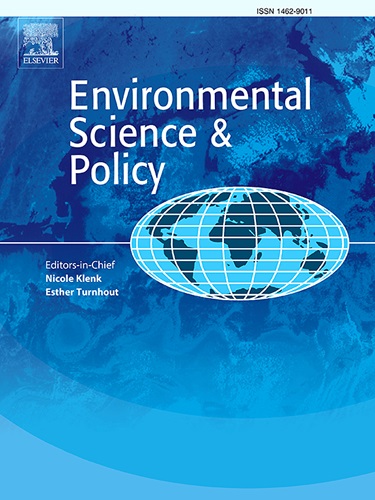Lifestyle change modelling for climate change mitigation: Complementary strengths, policy support, and research avenues
IF 5.2
2区 环境科学与生态学
Q1 ENVIRONMENTAL SCIENCES
引用次数: 0
Abstract
Lifestyle changes are an essential, complementary measure for reducing greenhouse gas emissions and, therefore, also an important ingredient to climate policy. Computational models of lifestyle changes and their contribution to climate change mitigation can provide valuable insights in support of decision-making by individuals and policymaking. In this Perspective, we examine four modelling approaches with this in mind: input-output analysis, life cycle assessment, integrated assessment models, and agent-based models. They have different strengths and weaknesses related to spatial and temporal scales, sector representation, consumer heterogeneity, and impact assessment. Despite their differences, all are ultimately suitable for modelling different types of climate-friendly lifestyle changes – from sufficiency over efficiency to modal shift measures. Each modelling approach provides useful, albeit partial, insights into lifestyle changes. The identified challenges call for both continual refinements within individual model frameworks and hybrid methods that bridge their respective strengths and allow for representing lifestyle changes more comprehensively. Together, they inform about the theoretical mitigation potential, initiative feasibility, behavioural plasticity, and policy effectiveness of lifestyle changes. Ultimately, cross-disciplinary collaboration will be key to designing lifestyle-focused policies that are both impactful and acceptable.
缓解气候变化的生活方式变化建模:互补优势、政策支持和研究途径
改变生活方式是减少温室气体排放必不可少的补充措施,因此也是气候政策的重要组成部分。生活方式变化的计算模型及其对减缓气候变化的贡献可以提供宝贵的见解,支持个人和政策制定。在这个视角中,我们考察了四种建模方法:投入产出分析、生命周期评估、综合评估模型和基于主体的模型。它们在空间和时间尺度、部门代表性、消费者异质性和影响评估方面具有不同的优势和劣势。尽管它们存在差异,但它们最终都适用于模拟不同类型的气候友好型生活方式变化——从效率的充足到模式转变措施。每种建模方法都对生活方式的变化提供了有用的(尽管是部分的)见解。已确定的挑战要求在单个模型框架和混合方法中不断改进,以桥接各自的优势,并允许更全面地表示生活方式的变化。总之,他们提供了有关理论缓解潜力、倡议可行性、行为可塑性和生活方式改变的政策有效性的信息。最终,跨学科合作将是设计既有效又可接受的以生活方式为重点的政策的关键。
本文章由计算机程序翻译,如有差异,请以英文原文为准。
求助全文
约1分钟内获得全文
求助全文
来源期刊

Environmental Science & Policy
环境科学-环境科学
CiteScore
10.90
自引率
8.30%
发文量
332
审稿时长
68 days
期刊介绍:
Environmental Science & Policy promotes communication among government, business and industry, academia, and non-governmental organisations who are instrumental in the solution of environmental problems. It also seeks to advance interdisciplinary research of policy relevance on environmental issues such as climate change, biodiversity, environmental pollution and wastes, renewable and non-renewable natural resources, sustainability, and the interactions among these issues. The journal emphasises the linkages between these environmental issues and social and economic issues such as production, transport, consumption, growth, demographic changes, well-being, and health. However, the subject coverage will not be restricted to these issues and the introduction of new dimensions will be encouraged.
 求助内容:
求助内容: 应助结果提醒方式:
应助结果提醒方式:


